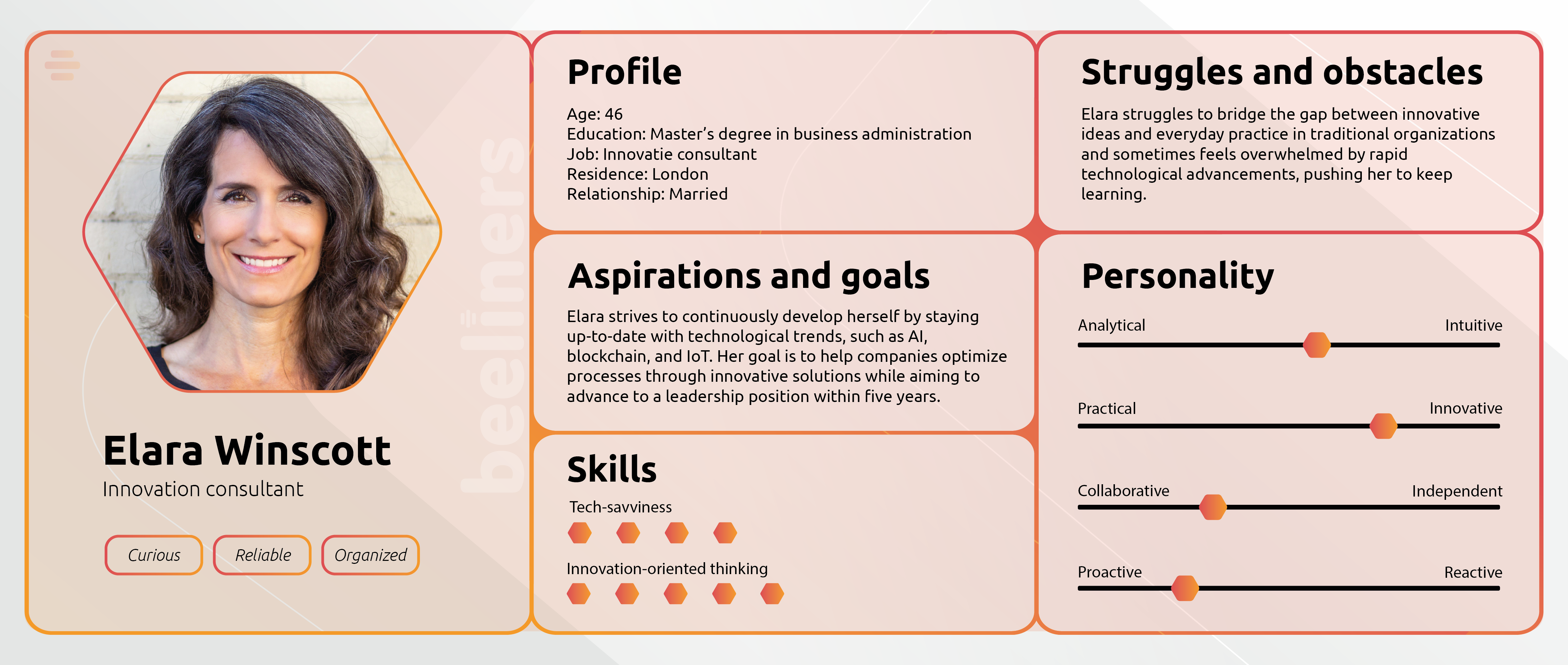When you’re preparing to launch a new product, it’s natural to be excited about your idea. But does the market share your enthusiasm? How do others view your idea? Or could it be that your new idea already exists?
Market research helps you answer these questions. This type of research involves gathering information about your customers and the market. In this blog, we’ll explain what market research is, what it can deliver, and how to conduct it effectively.
In this blog:
Have you completed your market research and are you ready to make your idea into reality? Then join us for a cup of coffee and let’s discuss the possibilities.
What is market research?
Market research helps you map out the market for your new product or service. The first step is identifying who your customers are. This includes researching their needs, where they’re located, and their demographic characteristics. It’s also important to study the customer journey — what steps do your customers take before making a purchase?
In addition to customer insights, it’s crucial to investigate existing products and services in the market and identify your competition. After all, you don’t want to launch a product that already exists. Analyzing your competitors can also reveal opportunities for differentiation. Market research helps you identify unique selling points (USPs) that set you apart.
What are the benefits of market research?
Although conducting market research takes time, the value it provides is substantial. It gives you insights into your customers, the market, and competitors, helping your organization make strategic, fact-based decisions and build concrete plans. Other advantages include:
- Avoid wasting money: Market research enables data-driven decisions rather than relying on gut feelings, saving both time and money. You’re better prepared to enter the market.
- Understand competitors and customers: By conducting market research, you gain a deeper understanding of both your competition and your customers. This allows you to develop a product or service that meets customer needs and addresses gaps left by competitors.
- Stimulate creativity: Exploring customer needs and competitor offerings often leads to new ideas and unique solutions, helping you stand out.
- Increase your chance of success: Understanding the market, customers, and competitors significantly improves the likelihood of a successful product or service launch.
How to conduct market research in 5 steps
Market research usually consists of five steps. Below we have listed them for you.
Step 1: Industry research
The first step of market research is conducting industry research. As the name suggests, this involves analyzing trends and the viability of your idea within your industry.
Look at how many businesses operate in your industry, economic data such as bankruptcy rates, revenue figures of similar companies, and industry developments.
Go beyond just the economic data, but also examine the target audiences of competitors, what they offer, and their pricing strategies.
It’s also smart to assess whether the world is ready for your innovation. One useful tool for this is the Stakeholder Readiness Level (SRL) tool from Rijkswaterstaat. It helps evaluate how prepared your organization and environment are for adopting a specific innovation.
Industry research is typically conducted online. The Dutch Chamber of Commerce (KvK) provides economic data and company figures, while CBS (Statistics Netherlands) offers industry-specific research results. For example, in 2024, electricity production from renewable sources such as solar, wind, and biomass increased by 10%.
Step 2: SWOT analysis
A SWOT analysis (Strengths, Weaknesses, Opportunities, and Threats) clarifies your organization’s internal strengths and weaknesses and external opportunities and threats.
You can create a SWOT analysis using the following steps:
- Internal analysis: Identify your company’s strengths and weaknesses. What do you do well? Where can you improve compared to competitors?
- External analysis: List external influences such as new regulations, market trends, customer behavior, politics, industry shifts, and competition.
- Create a matrix: Summarize all insights in a clear four-quadrant matrix.
With this overview, it becomes easier to decide on a strategy for bringing your product or service to market.
Step 3: Target audience research
Once you understand your industry and strategy, it’s time to define your target audience. This step involves identifying who you want to reach, where they are, and who your product is suitable for. This helps you determine how and where to reach your potential customers.There is a lot of useful data available both online and offline to help you define your target audience.
With the gathered data, you can create customer personas. These personas help you tailor your approach and marketing efforts.

Step 4: Surveying the target customers
A key part of market research is directly engaging with your target customers. There are several methods to do this:
- Quantitative research: This involves surveying a large group of people to get statistical insights about your product or service. You can use questionnaires, online surveys, or phone interviews. The advantage is that you can reach many people quickly and gather large amounts of data.
- Qualitative research: This is typically conducted with a smaller group through interviews or focus groups (without structure). During these interviews you can go into more detail about the wishes, characteristics and needs of the target customers. The advantage of this is that you can discover their real motives.
A good approach is to start with quantitative research, as it’s structured, easier to scale and doesn’t contain open questions. If you need to refine your findings, follow up with qualitative research, which involves open-ended questions and more probing. This is why qualitative research takes more time.
Step 5: Define and Optimize the Customer Journey
With all the collected data, you can now make informed decisions. You’ll be better equipped to respond to industry developments and customer needs.
Keep in mind that market research shouldn’t only be done when launching a new product. Conducting regular research helps you monitor changes over time and compare data effectively.
The approach of Beeliners: Design Flight
At Beeliners, we enhance your market research with our Beeliners Design Flight method. Market research reveals opportunities, and through Design Flight, we explore how to turn a specific opportunity into a concrete concept which we can test.
Contact opnemen
Also interesting
-

The iterative process: why and how we apply it
Every morning you wake up and the first thing you do is check your mobile phone. Throughout the day, you receive messages on it, and before you go to sleep at night, you set your alarm. We can no longer imagine modern phones not existing. In fact, the very first… Read More
-

7 tips for organising an innovation workshop with your team
An innovation workshop is an interactive session designed to help participants generate new ideas, come up with creative solutions and develop innovative processes. During an innovation workshop, participants can collaborate and brainstorm to discover new perspectives and solve existing problems. Innovation workshops can be organised for various purposes, such as… Read More
-

What is the difference between improving and innovating?
Many organisations like to come up with something new in the market. Whether it is an improved product or something completely new, consumers expect companies to continuously keep up with the latest technologies. Are you not meeting this expectation? Then chances are your consumer will switch to your competitor. By… Read More

